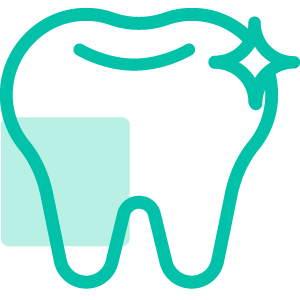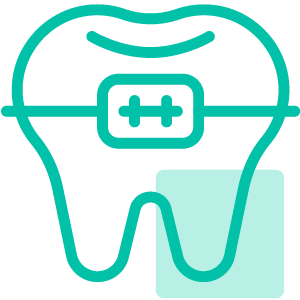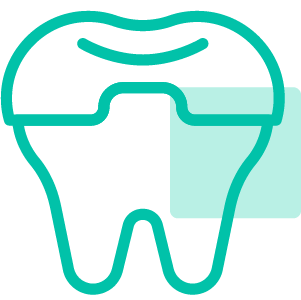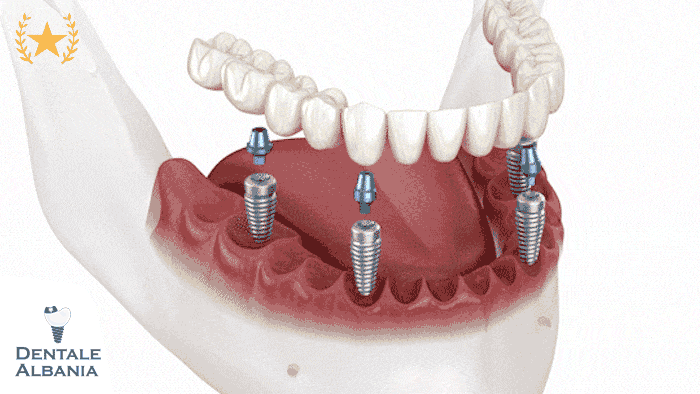Table of Contents
ToggleWhat Is Ridge Augmentation and When Is It Needed?

When a tooth is lost, it’s not just the visible gap in your smile that becomes a concern — it’s also what happens beneath the gums. Over time, the bone that once supported the tooth root — called the alveolar ridge — begins to deteriorate. Without stimulation from a tooth root or implant, this ridge shrinks in both height and width, making it more difficult to place dental restorations like implants or dentures.
This is where ridge augmentation comes in. Ridge augmentation is a specialized dental procedure designed to rebuild the bone structure of the jaw after tooth loss or extraction. It restores the natural shape and volume of the jawbone, preparing it for future treatments and improving both the function and appearance of your smile.
The procedure is commonly performed in cases where:
- There is significant bone loss after extraction.
- The jaw ridge is too thin or sunken for a dental implant.
- A patient needs better support for dentures or fixed bridges.
- Cosmetic improvement is desired to restore natural gum contours.
Although ridge augmentation may not be medically required in every case of tooth loss, it can be essential for ensuring the long-term success of dental implants or improving the fit of other restorations.
What Is a Ridge Augmentation?
Ridge augmentation is a surgical grafting procedure that rebuilds the bony structure of the jaw. It involves placing bone graft material into the area where bone has been lost. Over time, the graft helps stimulate new bone growth and restores the original ridge dimensions.
When Is a Ridge Augmentation Required?
Your dentist may recommend ridge augmentation:
- After tooth extraction, to preserve ridge shape
- Before implant placement, if the bone is too thin or short
- To correct deformities from previous trauma or gum disease
- When preparing for full or partial dentures to ensure proper fit
What Is a Severe Ridge Defect?
A severe ridge defect refers to significant loss of bone volume, often affecting both the height and width of the jaw. This can cause functional issues (like unstable dentures) and visible aesthetic concerns (sunken gums, facial asymmetry), making augmentation necessary for successful treatment outcomes.
How Is Ridge Augmentation Performed?
Ridge augmentation is a surgical procedure that restores the jawbone to a more natural shape and size, typically in preparation for dental implants or to improve denture stability. While the exact approach may vary depending on the severity of bone loss, the core steps of the procedure remain similar across patients.
How Is a Ridge Augmentation Done?
The procedure typically begins with the dentist or oral surgeon administering local anesthesia to numb the area. For patients who are anxious or undergoing a more extensive procedure, IV sedation or nitrous oxide may also be used to ensure comfort.
Once the area is numb, the surgeon will:
- Make a small incision in the gum tissue to expose the bone underneath.
- Clean and shape the area where bone loss has occurred.
- Place the bone graft material into the defect or socket. This material may be autogenous (from your own body), allograft (donor tissue), xenograft (from animals), or synthetic.
- Use titanium screws or pins to stabilize the graft in some cases.
- Optionally place a membrane over the graft to encourage bone growth and protect the site (a technique known as Guided Bone Regeneration or GBR).
- Suture the gum tissue back into place over the graft.
The entire procedure is typically completed in under two hours, depending on the size of the defect and whether additional grafting techniques (like soft tissue grafts) are required.
What Is Ridge Extension Procedure?
A ridge extension is a variation of ridge augmentation used to widen or heighten the jaw ridge when it’s too thin to support implants. There are two common techniques:
- Ridge splitting or expansion: The ridge is carefully split or widened, and graft material is inserted into the space.
- Onlay (veneer) grafting: A block of bone is placed over the defect and secured with screws, gradually becoming integrated with the natural jawbone.
This method is often used in more advanced cases and may require several months of healing before implants can be placed.
What Materials Are Used in Ridge Augmentation?
The success of ridge augmentation relies heavily on the type of bone grafting material used. The primary goal is to stimulate the body’s natural ability to regenerate bone and restore volume to the jaw ridge. Depending on the clinical situation, the dentist or surgeon may choose one or a combination of grafting materials.
What Is the Bone Ring Technique for Ridge Augmentation?
The bone ring technique is an advanced approach that allows for simultaneous bone grafting and implant placement. It involves a pre-formed ring of bone substitute material (or autogenous bone) that is inserted into a defect in the jaw. A dental implant is then inserted through the center of the ring. This technique:
- Reduces total treatment time
- Provides good initial implant stability
- Works best for vertical bone defects in the front of the mouth
It requires careful case selection and surgical precision, but in the right scenario, it can significantly shorten the patient’s implant journey.
Common Grafting Materials Used in Ridge Augmentation:
- Autograft (Your Own Bone):
- Harvested from another site in your body (e.g., chin, hip, or jaw)
- Offers the highest success rates due to natural bone cells and growth factors
- No risk of immune rejection
- Requires a second surgical site
- Allograft (Donor Bone):
- Sourced from human cadaver bone, thoroughly processed and sterilized
- Avoids the need for a second surgery
- Biocompatible, but slightly lower regenerative potential than autografts
- Xenograft (Animal Bone):
- Typically derived from bovine (cow) sources
- Highly purified and biocompatible
- Works primarily as a scaffold for your body to build new bone
- Alloplast (Synthetic Bone Substitutes):
- Composed of materials like calcium phosphate or bioactive glass
- Safe and predictable
- Useful in patients who cannot use biological tissue
Membranes and Additives:
In many cases, surgeons will use barrier membranes (resorbable or non-resorbable) to protect the graft and prevent soft tissue from interfering with bone regeneration. Additionally, platelet-rich fibrin (PRF) or bone growth factors (like rhBMP-2) may be used to enhance healing and bone formation.
What Is the Difference Between Ridge Augmentation and Bone Grafting?
While ridge augmentation and bone grafting are often used interchangeably, they are not exactly the same procedure. Both involve adding bone or bone-like material to the jaw, but their goals, scope, and applications can differ. Understanding the difference is important for patients considering dental implants or dealing with bone loss after tooth extraction.
What Is the Difference Between Bone Augmentation and Ridge Augmentation?
- Bone augmentation is a broad term used to describe any procedure that increases the amount of bone in the jaw.
- Ridge augmentation is a specific type of bone augmentation that focuses on rebuilding the alveolar ridge, the part of the jaw that holds the teeth.
- Bone augmentation may be used in other areas of the jaw (like the sinus area), while ridge augmentation focuses on where teeth have been lost.
Bone Grafting vs. Ridge Augmentation Procedures
- Bone grafting is used in various dental procedures, from saving a compromised tooth to preparing for implants.
- Ridge augmentation is a reconstructive procedure specifically designed to restore lost contour and dimensions to the jaw ridge.
- Bone grafting may be done immediately after an extraction to preserve the socket; ridge augmentation is often done later when bone loss has already occurred.
- In many cases, ridge augmentation involves a bone graft — so the two procedures can overlap — but not all bone grafts are ridge augmentations.
Summary:
- Think of ridge augmentation as a type of bone grafting with a specific purpose: rebuilding the ridge to make future dental work possible.
- In contrast, bone grafting can be used for a wider variety of purposes, including general volume restoration, periodontal support, and implant anchoring.
How Long Does Ridge Augmentation Take to Heal and Last?

Ridge augmentation is a highly effective procedure, but it requires time and patience to heal properly. Healing and long-term outcomes depend on several factors, including the type of graft material, the location of the augmentation, the size of the defect, and your overall health. Here’s what to expect before, during, and after healing.
How Long Does Ridge Augmentation Take to Heal?
- Healing typically occurs in phases over several months.
- Initial recovery (swelling and discomfort) lasts about 1–2 weeks.
- Soft tissue healing is usually complete by 3–4 weeks.
- Bone regeneration and integration of the graft can take 4–9 months, depending on the graft material and whether autogenous bone was used.
- Smokers, diabetics, and individuals with poor oral hygiene may experience slower healing.
Tips for optimal healing:
- Avoid smoking or alcohol
- Stick to soft foods and avoid chewing at the surgical site
- Use prescribed mouth rinses to prevent infection
- Attend all follow-up visits for evaluation
How Long Does Ridge Augmentation Last?
- When successful, the effects of ridge augmentation are long-lasting and often permanent, especially if followed by implant placement.
- The newly regenerated bone integrates with your jaw and becomes part of your natural anatomy.
- Without implants or prosthetics to stimulate the bone, some resorption may still occur over time.
- Maintenance includes good oral hygiene, regular check-ups, and protecting the area from trauma.
How Long Does a Ridge Augmentation Take?
- The procedure itself typically lasts 60 to 90 minutes, depending on complexity.
- If onlay bone grafting or ridge expansion is needed, it could take longer.
- If combined with implant placement, surgical time will increase, but total treatment time may be reduced.
Is Ridge Augmentation Painful? What Are the Side Effects and Risks?
Ridge augmentation is a surgical procedure, so some level of discomfort is expected — but most patients find it very manageable, especially with modern pain management techniques. It’s important to understand what kind of pain or side effects are normal, what complications can arise, and how to minimize them.
How Painful Is Ridge Augmentation?
- Most patients experience mild to moderate discomfort during the first few days after surgery.
- Local anesthesia is used during the procedure, and many clinics also offer IV sedation or nitrous oxide for anxious patients.
- After the numbness wears off, you might feel:
- Swelling in the cheek or jaw
- Mild soreness or pressure
- Bruising at the surgical site
- Discomfort typically peaks within 48–72 hours and gradually decreases.
- Prescribed or over-the-counter anti-inflammatory pain medications usually provide sufficient relief.
What Are the Complications of Ridge Augmentation?
Though rare, complications can occur — especially if post-op instructions are not followed. Potential risks include:
- Wound dehiscence: the surgical site reopens, which may expose the graft material
- Infection: can delay healing or lead to graft failure
- Graft rejection: body does not accept donor or synthetic material
- Excessive bleeding: especially in patients on blood thinners
- Nerve damage: numbness or tingling, particularly in the lower jaw
- Bone resorption: the graft does not integrate properly and begins to shrink
- Soft tissue irritation or gum recession around the area
To reduce risks:
- Avoid smoking and alcohol
- Follow a soft-food diet
- Keep the area clean but avoid brushing the surgical site directly
- Take all prescribed antibiotics and medications
How Much Does Ridge Augmentation Cost and What Affects It?
The cost of ridge augmentation can vary significantly depending on the extent of the procedure, materials used, and location of the dental practice. While it’s often considered an investment in the long-term success of implants or dentures, understanding the price breakdown can help you plan ahead financially.
How Much Does Ridge Augmentation Cost?
- In the United States, ridge augmentation typically costs between $600 and $2,000 per site.
- In Albania, ridge Augmentation alone typically starts at around $454 (≈ €420) in partner clinics . More complex cases—such as combined horizontal and vertical defects or the use of autogenous grafts—can reach up to $800–$1,000 (€750–€930), depending on the clinic’s expertise and location.
- In the UK, prices range from £400 to £1,500, depending on complexity and the clinic.
- Factors influencing the cost:
- Whether the graft is autogenous, donor-based, or synthetic
- Use of additional procedures like membranes or platelet-rich fibrin (PRF)
- Need for sedation or general anesthesia
- Geographic location and reputation of the dental provider
How Much Does Dental Ridge Augmentation Cost?
If ridge augmentation is being done specifically for dental implant preparation, it may be bundled with the overall implant procedure, or it may be billed separately.
- Single-tooth ridge grafting: $600–$1,200
- Multiple-site grafting with horizontal/vertical bone loss: $1,500–$3,000+
- Ridge augmentation with simultaneous implant: can add $1,000+ to the total implant cost
Some dental insurance plans may cover part of the procedure if it’s deemed medically necessary. Always check your coverage beforehand.
What Is the Cost of Dental Bone Grafting?
Bone grafting — including ridge augmentation — ranges from:
- Basic socket preservation: $300–$800
- Complex onlay grafts or ridge expansion: $2,000–$4,000+
- Jaw bone graft with hip or external donor site: $3,000–$6,000+
If you’re receiving a bone graft and implant, expect your total treatment plan to be in the $3,000 to $6,000+ range per tooth, depending on bone volume, technique, and restorations.
Bone Grafting for Dental Implants: How It Compares
If you’re considering dental implants but have insufficient bone in your jaw, your dentist may recommend either bone grafting or ridge augmentation to rebuild the bone structure. While these procedures share similarities, they differ in purpose, scope, and application — especially in the context of implant placement.
Dental Implants and Bone Grafts: What’s the Connection?
- Dental implants require solid bone support to stay stable and fuse properly (osseointegration).
- If your jawbone has deteriorated due to tooth loss, gum disease, or trauma, implants alone may not be viable.
- That’s where bone grafting or ridge augmentation prepares the foundation for implant success.
- In fact, about 50% of dental implant cases require some form of bone grafting.
Bone Grafting for Dental Implants
Bone grafting is typically done when:
- You’ve recently lost a tooth, and socket preservation is needed
- You’ve experienced long-term bone loss and need vertical or horizontal volume restoration
- You need to build up the sinus area for upper jaw implants (sinus lift)
- You’re combining soft tissue and hard tissue grafting to ensure both function and aesthetics
Most common grafts used for implants include:
- Autografts from your jaw or hip
- Allografts (donor bone)
- Xenografts (animal bone)
- Alloplasts (synthetic bone substitutes)
Ridge Augmentation vs Bone Graft for Implants
| Feature | Ridge Augmentation | Bone Grafting |
| Purpose | Rebuild jaw ridge after bone loss | General bone volume restoration |
| Focus Area | Alveolar ridge (after tooth loss) | Anywhere in the jaw |
| Implant Timing | Typically before implants | Before or during implant placement |
| Common Use | Post-extraction defects, denture prep | Sinus lifts, major resorption, socket preservation |
| Aesthetic Impact | High (restores gum contours) | Moderate, depends on location |
What Is a Bone Graft for a Tooth Implant?
A bone graft for a tooth implant is done either:
- Immediately after extraction (to preserve the socket)
- Before implant placement, to build enough bone mass
- At the same time as implant placement, if there’s mild bone loss and the graft can stabilize the area
Success depends on:
- The amount of remaining bone
- The type of graft used
- The timing and surgical technique
What Are the Different Types of Bone Grafts Used in Dentistry?

When it comes to restoring lost bone in the jaw, dentists have a range of grafting materials to choose from. Each type of bone graft has its unique benefits and applications. The decision often depends on the patient’s condition, the location of the graft, and the desired outcome.
Autograft (Your Own Bone)
- Source: Harvested from another part of your body, such as the chin, jaw, or hip.
- Advantages:
- Considered the “gold standard” due to its natural bone cells and growth factors.
- Eliminates the risk of rejection or disease transmission.
- High success rates in promoting new bone growth.
- Drawbacks:
- Requires a second surgical site.
- Longer recovery time.
- Limited availability of donor bone.
Allograft (Donor Bone)
- Source: Human donor tissue, usually processed and sterilized.
- Advantages:
- No need for a second surgical site.
- Readily available.
- Effective for most dental grafting procedures.
- Drawbacks:
- Slightly lower regenerative potential compared to autografts.
- Rare but possible risk of disease transmission.
Xenograft (Animal Bone)
- Source: Usually bovine (cow) or porcine (pig) bone, treated to ensure safety and compatibility.
- Advantages:
- Provides a sturdy scaffold for bone growth.
- No need for an additional surgical site.
- Reliable results in dental grafting.
- Drawbacks:
- Slower integration into the jaw.
- Small risk of immune reaction.
Alloplast (Synthetic Bone Substitutes)
- Source: Man-made materials like hydroxyapatite, beta-tricalcium phosphate, or bioactive glass.
- Advantages:
- Biocompatible and safe.
- No risk of disease transmission.
- Suitable for patients who prefer not to use biological materials.
- Drawbacks:
- Less effective in complex cases.
- Slower integration compared to natural bone.
Which Type Is Best?
The “best” bone graft depends on:
- The amount of bone needed.
- The patient’s overall health and preferences.
- The complexity of the defect.
- Whether the graft is being placed before or during implant surgery.
Dentists often combine materials—such as mixing autografts with synthetic substitutes—to achieve optimal results.
Jawbone and Tooth Grafts: Related Procedures to Ridge Augmentation
Ridge augmentation is one of several approaches to restoring lost bone in the jaw, but it’s not the only option. Dentists and oral surgeons often rely on a range of related grafting techniques to address specific issues, from preserving a tooth socket to lifting the sinus floor. Each procedure complements ridge augmentation by either maintaining, enhancing, or rebuilding bone volume in different areas of the jaw.
What Are Bone Grafts for Teeth?
Bone grafts for teeth, often performed after extractions, help preserve or rebuild the jaw’s structure. Common situations include:
- Socket preservation: Prevents bone loss immediately after a tooth is removed.
- Periodontal grafting: Restores bone lost due to gum disease.
- Pre-implant grafts: Ensures there’s enough stable bone to anchor an implant.
Jawbone Grafts: More Than Ridge Augmentation
- Sinus lift (Sinus augmentation):
When the upper jawbone is too thin or close to the sinus cavity, a sinus lift raises the sinus floor and places bone graft material to create a strong base for implants. - Ridge splitting/expansion:
If the ridge is too narrow, the dentist carefully splits the jawbone and inserts grafting material into the gap. This expands the ridge horizontally, allowing for wider implants. - Onlay grafting:
Bone is layered over the existing jawbone to build vertical or horizontal volume. Often used for significant defects, this technique is ideal for restoring natural contours. - Block grafting:
A block of bone, usually harvested from the patient’s own jaw or hip, is shaped and secured with screws. This approach is frequently employed in severe cases of bone loss.
Tooth Bone Grafts: Socket Preservation After Extraction
When a tooth is extracted, the empty socket may shrink and weaken over time. A tooth bone graft:
- Stabilizes the socket: Preserves the height and width of the ridge.
- Prepares for future implants: Ensures the bone will remain strong enough for implant placement.
- Improves aesthetics: Prevents unsightly gum and bone collapse in visible areas.
Conclusion:
Jawbone and tooth grafts serve as critical supports to ridge augmentation, providing alternative or complementary methods to rebuild lost bone. Whether it’s a sinus lift, ridge expansion, or simple socket preservation, these procedures all contribute to creating a stable, functional, and aesthetic foundation for future restorations.
Frequently Asked Questions About Ridge Augmentation
When considering ridge augmentation, many patients have questions about the healing process, risks, costs, and other aspects of the procedure. Here are some of the most frequently asked questions to help you better understand what to expect.
How Long Does Ridge Augmentation Take to Heal?
- Initial Healing:
Most patients experience noticeable improvement within 1–2 weeks, during which swelling and minor discomfort subside. This early stage of healing focuses primarily on soft tissue recovery and suture removal. - Bone Integration Period:
The bone graft material placed during ridge augmentation takes longer to fully integrate with the jawbone. Depending on the type of graft used (autograft, allograft, xenograft, or alloplast), bone regeneration and maturation can take between 4–9 months. - Factors That Influence Healing Time:
- Size and complexity of the augmentation: Larger defects may take longer to heal.
- Type of graft material: Autogenous grafts typically heal faster than synthetic materials.
- Patient health and lifestyle: Smoking, uncontrolled diabetes, or poor oral hygiene can prolong recovery.
- Final Outcome:
By the time the graft has fully integrated and the ridge is stable, most patients are ready for further dental work—like implant placement—at around the 6–9 month mark. In some cases, this may happen sooner if healing progresses quickly and the bone density is sufficient.
Is Ridge Augmentation Painful?
Most patients find ridge augmentation to be manageable in terms of pain. While it is a surgical procedure, advancements in modern dental techniques and anesthesia help keep discomfort to a minimum.
What to Expect:
- During the Procedure:
- Local anesthesia is standard, ensuring you won’t feel any pain during the surgery.
- For added comfort, many dental offices offer sedation options, such as nitrous oxide or intravenous (IV) sedation.
- After the Procedure:
- Some soreness and swelling are normal, but these symptoms usually peak within the first few days and then gradually subside.
- Over-the-counter pain relievers like ibuprofen or acetaminophen are often sufficient to manage discomfort.
- Cold compresses applied to the outside of the face can help reduce swelling and ease mild pain.
- Long-term Pain:
- Ridge augmentation is typically not associated with long-term pain. Once healing is underway, any discomfort from the procedure should fade completely.
Tips for a Comfortable Recovery:
- Avoid chewing on the surgical site.
- Stick to soft foods for the first few days.
- Follow your dentist’s aftercare instructions carefully.
By adhering to post-operative guidelines, most patients find that the pain is minor and short-lived, making the procedure well worth it for the long-term benefits it provides.









